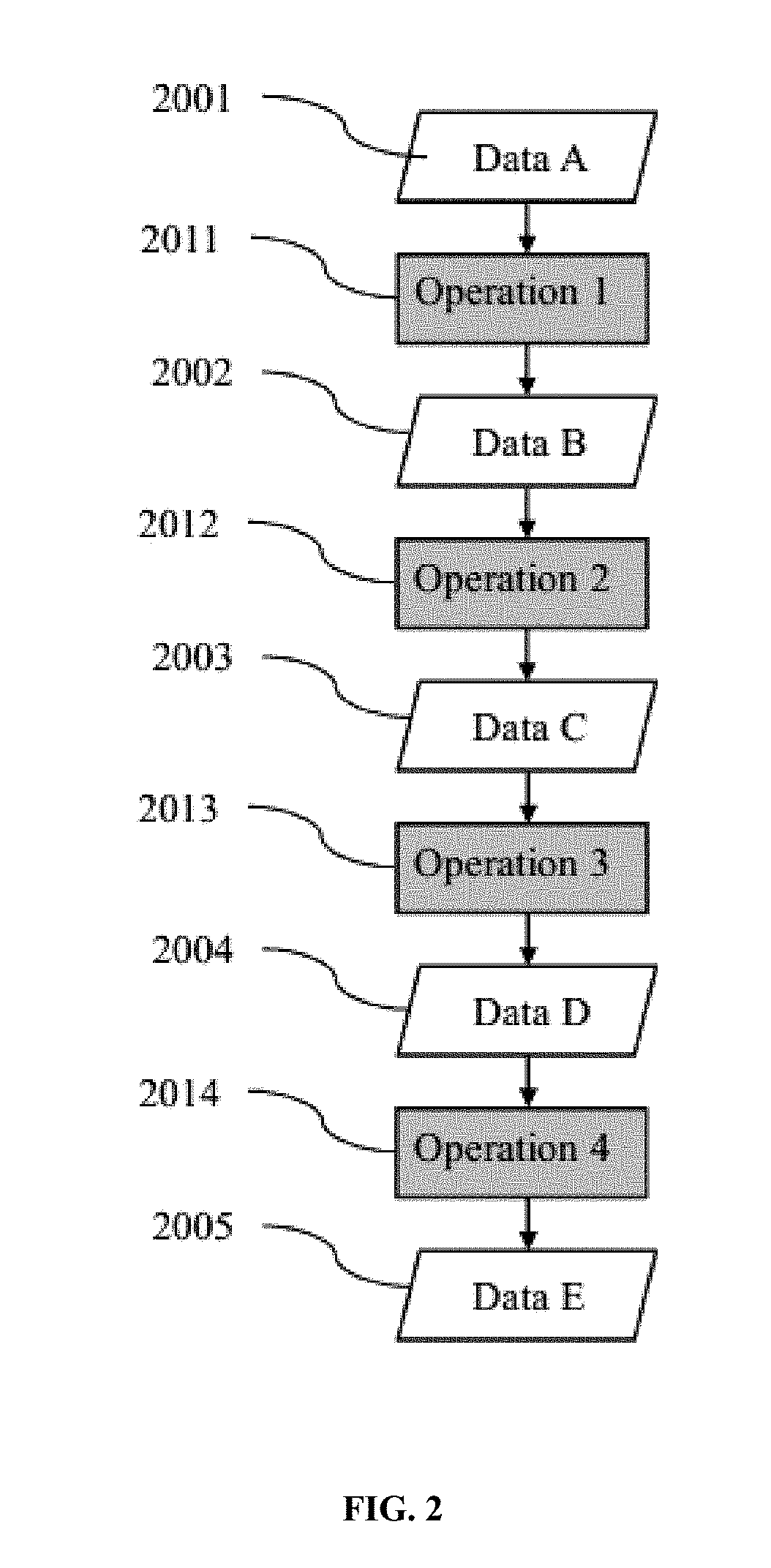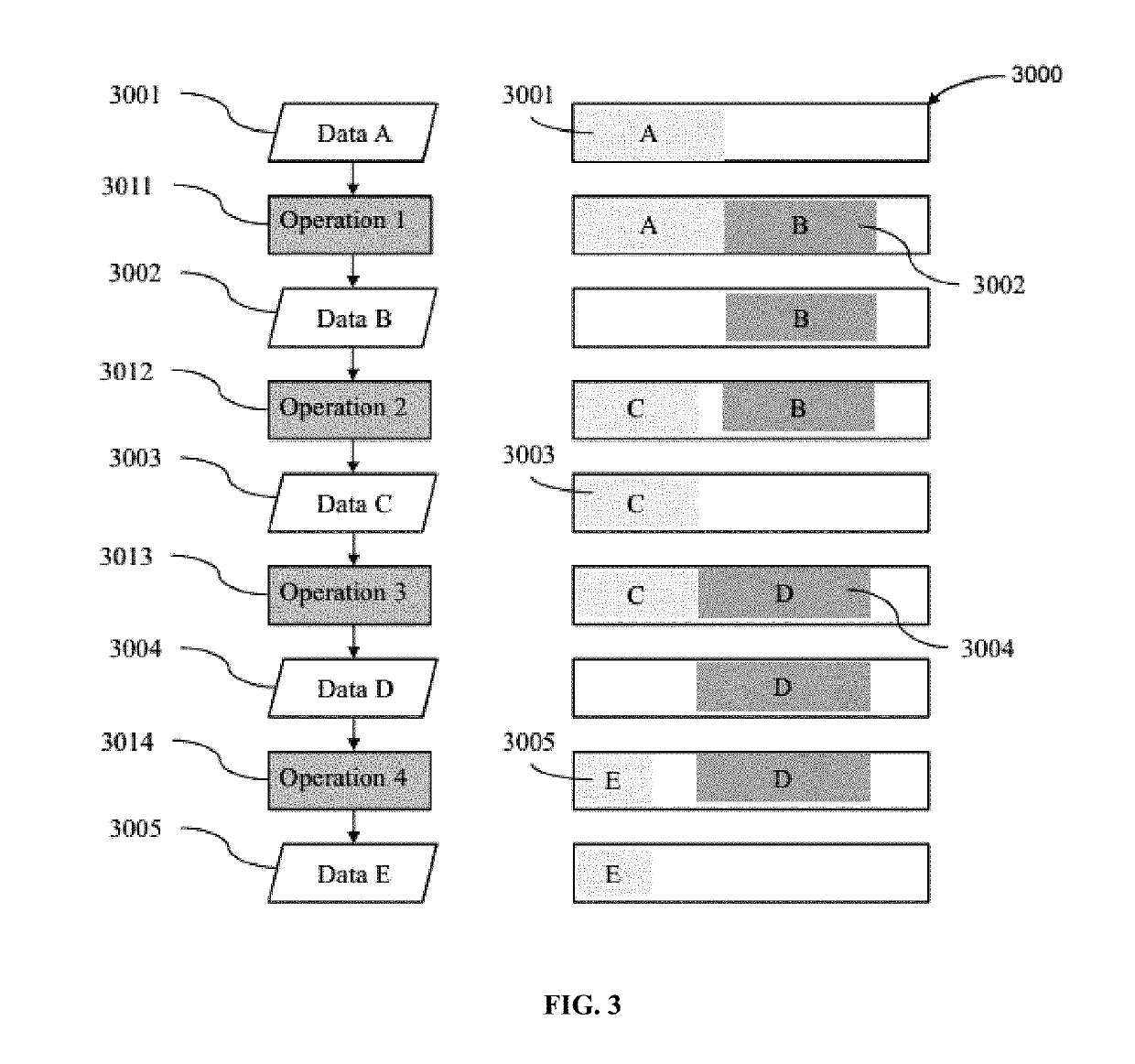Systems and methods of data processing
- Summary
- Abstract
- Description
- Claims
- Application Information
AI Technical Summary
Benefits of technology
Problems solved by technology
Method used
Image
Examples
example 1
[0199]In an exemplary example with reference to FIG. 2, we assume that the data A accounts for 40% of capacity of the memory unit, the data B accounts for 15% of capacity of the memory unit, the data C accounts for 40% of capacity of the memory unit, the data D accounts for 70% of capacity of the memory unit, and the data E accounts for 20% of capacity of the memory unit. In this example, the operation 3 can be identified as a first operation having an amount of input data C and output data D of exceeding the capacity of the memory unit (e.g., 40%+70%>100%).
[0200]In some embodiments, the identified operation 3, which has an amount of input data C and output data D exceeding the capacity of the memory unit, can be grouped with the at least one second operation selected from among the series of operations. The at least one second operation can be the operation 2, as shown in the grouping scheme of FIG. 5. With this grouping scheme, the grouped operations 2-3 can have an overall input ...
example 2
[0207]In another exemplary example with reference to FIG. 2, we assume that the data A accounts for 40% of capacity of the memory unit, the data B accounts for 40% of capacity of the memory unit, the data C accounts for 80% of capacity of the memory unit, the data D accounts for 80% of capacity of the memory unit, and the data E accounts for 10% of capacity of the memory unit. In this example, the operation 2 can be identified from the series of operations 1-4 as a first operation having an amount of input data and output data exceeding the capacity of the memory unit (e.g., 40%+80%>100%).
[0208]One second operation can first be selected from the series of operations when the operation 2 is identified, which second operation is to be grouped with the identified operation 2. In this example, there are two possible grouping schemes when only one second operation is to be grouped with the operation 2. For example, the operation 1 can be grouped with the operation 2, or the operation 3 c...
example 3
[0212]In yet another exemplary example with reference to FIG. 2, we assume that the data A accounts for 10% of capacity of the memory unit, the data B accounts for 40% of capacity of the memory unit, the data C accounts for 80% of capacity of the memory unit, the data D accounts for 80% of capacity of the memory unit, and the data E accounts for 10% of capacity of the memory unit. In this example, the operation 2 can be identified from the series of operations 1-4 as a first operation having an amount of input data and output data of the operation 2 exceeding the capacity of the memory unit (e.g., 40%+80%>100%).
[0213]One second operation can first be selected from the series of operations when the operation 2 is identified, which second operation is to be grouped with the identified operation 2. In this example, there are two possible grouping schemes when only one second operation is to be grouped with the operation 2. For example, the operation 1 can be grouped with the operation ...
PUM
 Login to View More
Login to View More Abstract
Description
Claims
Application Information
 Login to View More
Login to View More - R&D
- Intellectual Property
- Life Sciences
- Materials
- Tech Scout
- Unparalleled Data Quality
- Higher Quality Content
- 60% Fewer Hallucinations
Browse by: Latest US Patents, China's latest patents, Technical Efficacy Thesaurus, Application Domain, Technology Topic, Popular Technical Reports.
© 2025 PatSnap. All rights reserved.Legal|Privacy policy|Modern Slavery Act Transparency Statement|Sitemap|About US| Contact US: help@patsnap.com



